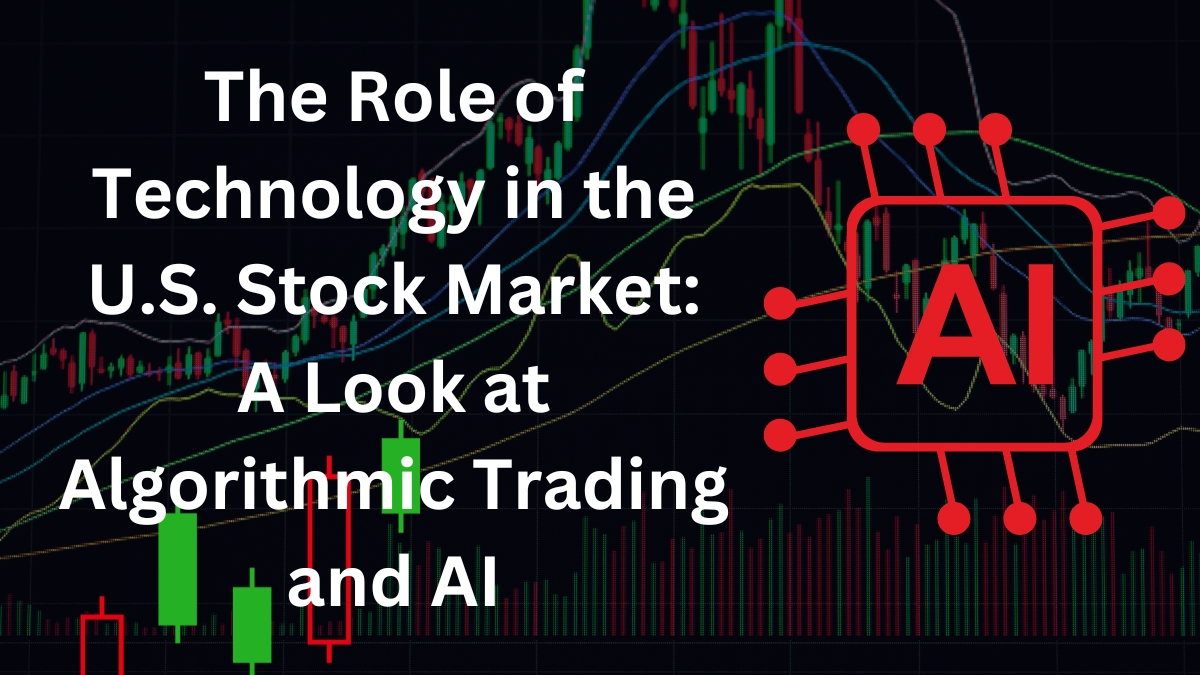Technology has transformed every facet of the U.S. stock market, reshaping the way traders and investors interact with financial markets. Among these advancements, algorithmic trading and artificial intelligence (AI) stand out as revolutionary forces. This blog explores how technology has revolutionized stock trading, the benefits and risks of algorithmic trading and AI-driven tools, and offers practical tips for individual investors looking to stay competitive.
How Technology Has Revolutionized Stock Trading
Gone are the days of physical trading floors dominated by human brokers shouting orders. Today, stock trading has become a predominantly digital and automated process. Here are key ways technology has changed the game:
1. High-Speed Transactions
- Advances in computer hardware and software enable trades to be executed in microseconds.
- High-frequency trading (HFT) firms now dominate the markets, accounting for a significant share of daily trading volumes.
2. Accessibility for Individual Investors
- Online brokerage platforms (e.g., Robinhood, E*TRADE, and Fidelity) have democratized access to the stock market.
- Retail investors can now trade at lower fees, with real-time market data at their fingertips.
3. Algorithmic Trading
- Algorithms analyze market data and execute trades based on predefined criteria, such as price, volume, and timing.
- Large institutions rely heavily on algorithms to optimize trading strategies and minimize costs.
4. AI-Powered Tools
- Machine learning models predict stock price movements by analyzing massive datasets, including news sentiment and historical prices.
- AI-driven platforms provide personalized investment recommendations to retail investors.
Benefits of Algorithmic Trading and AI-Driven Tools
While algorithmic trading and AI have introduced complexities, they offer numerous advantages:
1. Speed and Efficiency
- Algorithms execute trades at lightning speed, seizing opportunities unavailable to human traders.
- This speed can reduce costs and improve liquidity in the markets.
2. Data-Driven Decisions
- AI can process vast amounts of structured and unstructured data, such as social media trends and global news.
- Insights generated by AI are often more accurate and timely than human analysis.
3. Elimination of Human Emotion
- Algorithms operate purely on logic, eliminating emotional biases like fear and greed.
- This leads to more disciplined and consistent trading strategies.
4. Customization for Retail Investors
- AI tools like robo-advisors (e.g., Betterment, Wealthfront) create tailored investment portfolios based on an individual’s risk tolerance and goals.
- They automate rebalancing and tax-loss harvesting, making investing more accessible.
Risks of Algorithmic Trading and AI in the Stock Market
Despite their benefits, algorithmic trading and AI pose several risks:
1. Market Volatility
- Algorithms can amplify price swings, especially during periods of market stress.
- Flash crashes, such as the one in May 2010, have been partially attributed to high-frequency trading.
2. Over-Reliance on Technology
- Errors in coding or system malfunctions can lead to significant financial losses.
- An algorithm’s inability to adapt to unforeseen events can create vulnerabilities.
3. Ethical Concerns and Inequality
- Large institutions with advanced algorithms have a competitive edge, potentially disadvantaging retail investors.
- The use of AI in trading raises questions about fairness and market manipulation.
4. Lack of Transparency
- Many AI models are “black boxes,” meaning their decision-making processes are opaque.
- Investors may not fully understand the risks associated with automated strategies.
Tips for Individual Investors to Leverage Technology
As technology evolves, individual investors can also harness its power to enhance their trading strategies. Here’s how:
1. Use Reliable Online Platforms
- Choose a brokerage that offers intuitive interfaces, real-time data, and low fees.
- Look for features like paper trading to practice strategies without risking real money.
2. Educate Yourself on AI Tools
- Explore robo-advisors for automated portfolio management if you’re a beginner.
- Advanced traders can experiment with AI-powered platforms like Alpaca or QuantConnect for algorithmic strategies.
How to Identify Multibagger Stocks for Long-Term Gains- Digitalhint
3. Stay Informed
- Follow market news, technology updates, and AI advancements to stay ahead.
- Subscribe to financial blogs, podcasts, or newsletters to expand your knowledge.
4. Diversify Your Strategy
- Don’t rely solely on AI or algorithms. Combine them with fundamental and technical analysis for a balanced approach.
- Diversify your investments across different asset classes and geographies.
5. Be Cautious with Automated Trading
- Start small with algorithmic trading and thoroughly test any strategies.
- Monitor automated systems regularly to ensure they align with your goals.
Conclusion
Technology, especially algorithmic trading and AI, has dramatically changed the landscape of the U.S. stock market. While these advancements offer unparalleled speed, efficiency, and insights, they come with challenges like increased volatility and ethical concerns.
By understanding the benefits and risks, individual investors can make informed decisions and leverage these tools effectively. Remember, technology is a powerful ally, but the key to success lies in combining innovation with traditional investing wisdom.
Are you ready to embrace the future of trading? Share your thoughts and strategies in the comments below!

